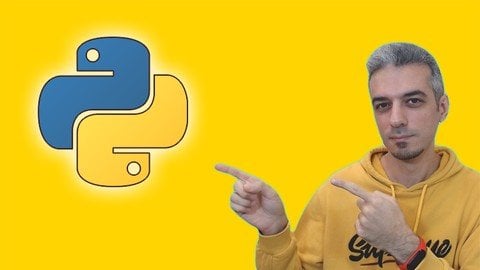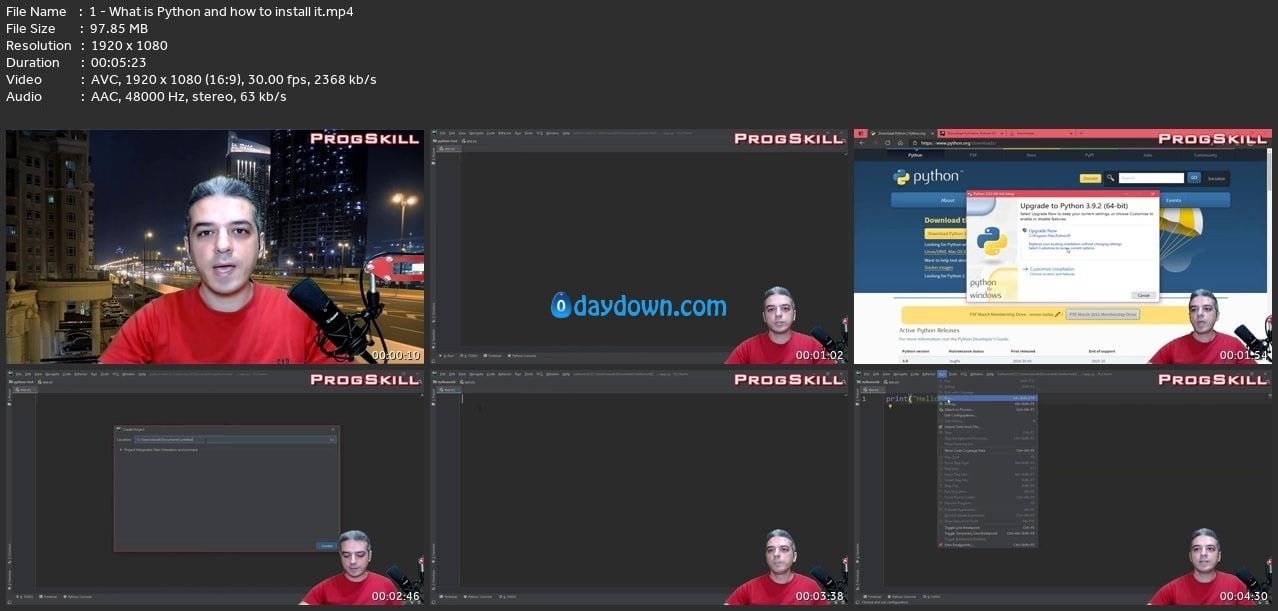
Published 7/2024
MP4 | Video: h264, 1920×1080 | Audio: AAC, 44.1 KHz
Language: English | Size: 2.25 GB | Duration: 3h 46m
Python zero to hero for beginners
What you’ll learn
Understand the fundamental concepts of Python programming, including data types, control structures, and functions.
Apply Python to solve real-world problems by writing efficient and effective code.
Analyze complex coding challenges and debug Python code to ensure functionality and performance.
Create Python projects, such as web applications or data analysis tools, that demonstrate proficiency and creativity in Python programming.
Requirements
No programming experience needed. You will learn everything you need to know.
Description
Python is a popular programming language. It was created by Guido van Rossum and released in 1991. It is used for:web development (server-side),software development,mathematics,system scripting.What can Python do?Python can be used alongside software to create workflows.Python can be used on a server to create web applications.Python can connect to database systems. It can also read and modify files.Python can be used to handle big data and perform complex mathematics.Python can be used for rapid prototyping or production-ready software development.Why Python?Python works on different platforms (Windows, Mac, Linux, Raspberry Pi, etc).Python has a simple syntax similar to the English language.Python has a syntax that allows developers to write programs with fewer lines than other programming languages.Python runs on an interpreter system, meaning that code can be executed as soon as it is written. This means that prototyping can be very quick.Python can be treated in a procedural way, an object-oriented way, or a functional way.Good to knowThe most recent major version of Python is Python 3, which we shall be using in this tutorial. However, Python 2, although not being updated with anything other than security updates, is still quite popular.In this tutorial, Python will be written in a text editor. It is possible to write Python in an Integrated Development Environment, such as Thonny, Pycharm, Netbeans, or Eclipse, which are particularly useful when managing larger collections of Python files.Python Syntax compared to other programming languagesPython was designed for readability and has some similarities to the English language with influence from mathematics.Python uses new lines to complete a command, unlike other programming languages, which often use semicolons or parentheses.Python relies on indentation, using whitespace, to define scopes, such as the scope of loops, functions, and classes. Other programming languages often use curly brackets for this purpose.
Overview
Section 1: Introduction
Lecture 1 What is Python and how to install it
Lecture 2 Python programming variables
Lecture 3 Numbers in Python
Lecture 4 Python Boolean + Casting in Python
Lecture 5 Python String Slicing – how to use strings in python
Lecture 6 Python lists explained
Lecture 7 Python list comprehension
Lecture 8 How to create tuple in Python
Lecture 9 Set in python
Lecture 10 Dictionary in Python
Lecture 11 Python if and else statements
Lecture 12 Python while loop
Lecture 13 Python for loop
Lecture 14 Functions in Python
Lecture 15 Python lambda function
Lecture 16 Python map and filter
Lecture 17 Python variable scope
Lecture 18 Python string formatting
Lecture 19 Python modules
Lecture 20 File handling in Python
Beginner python developers
Password/解压密码www.tbtos.com
